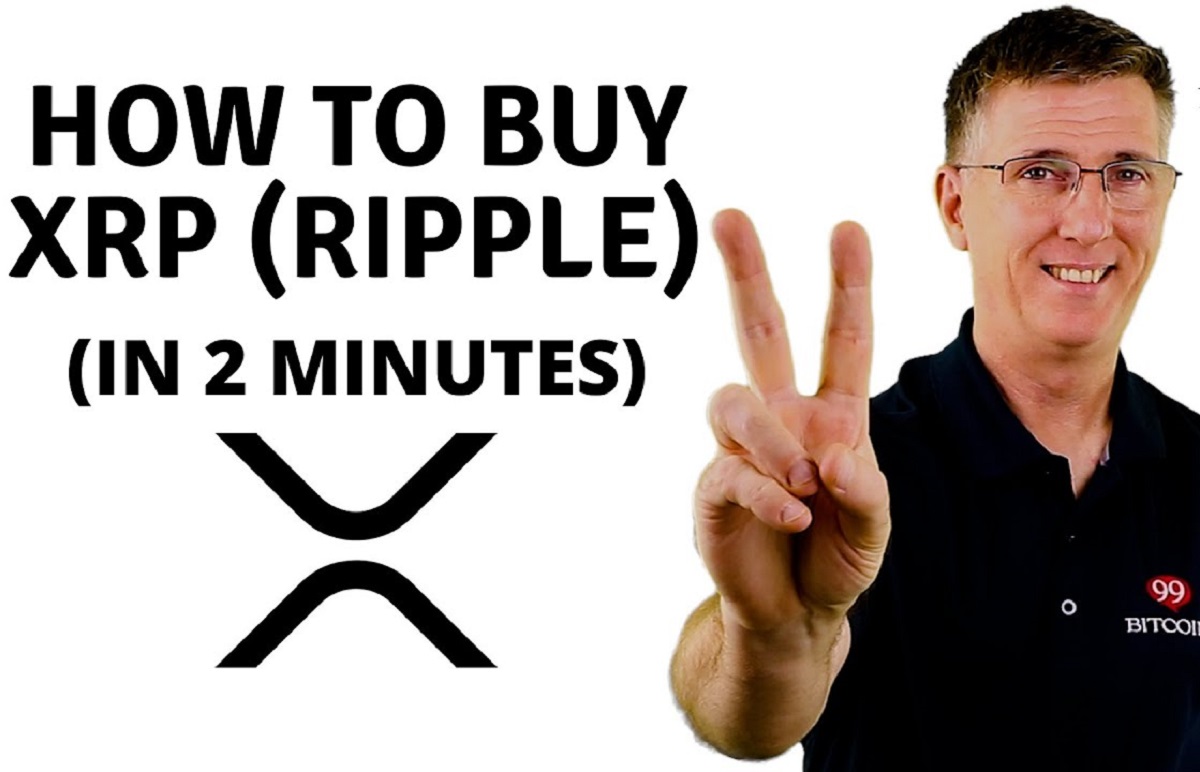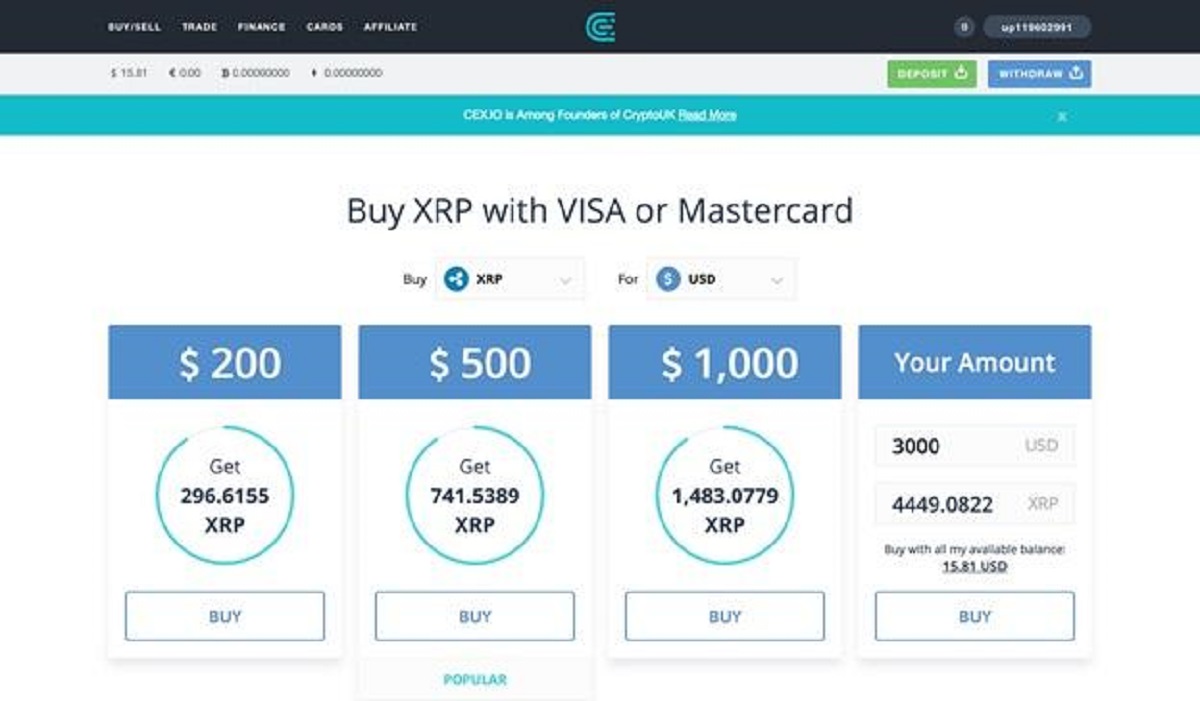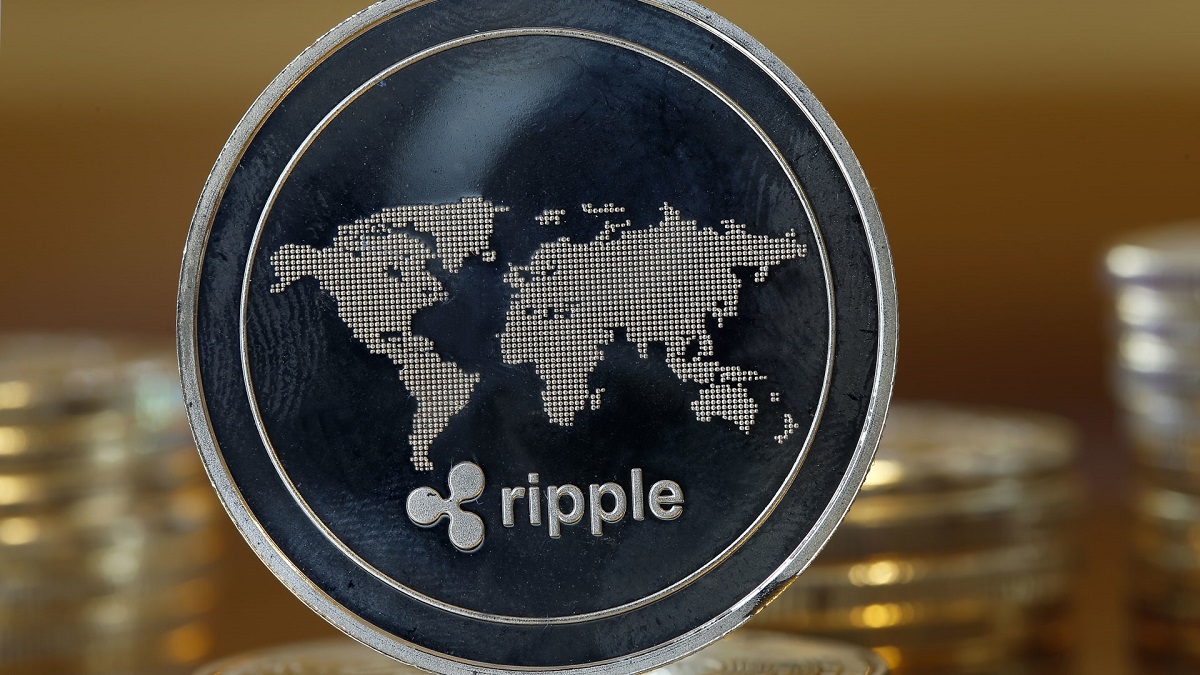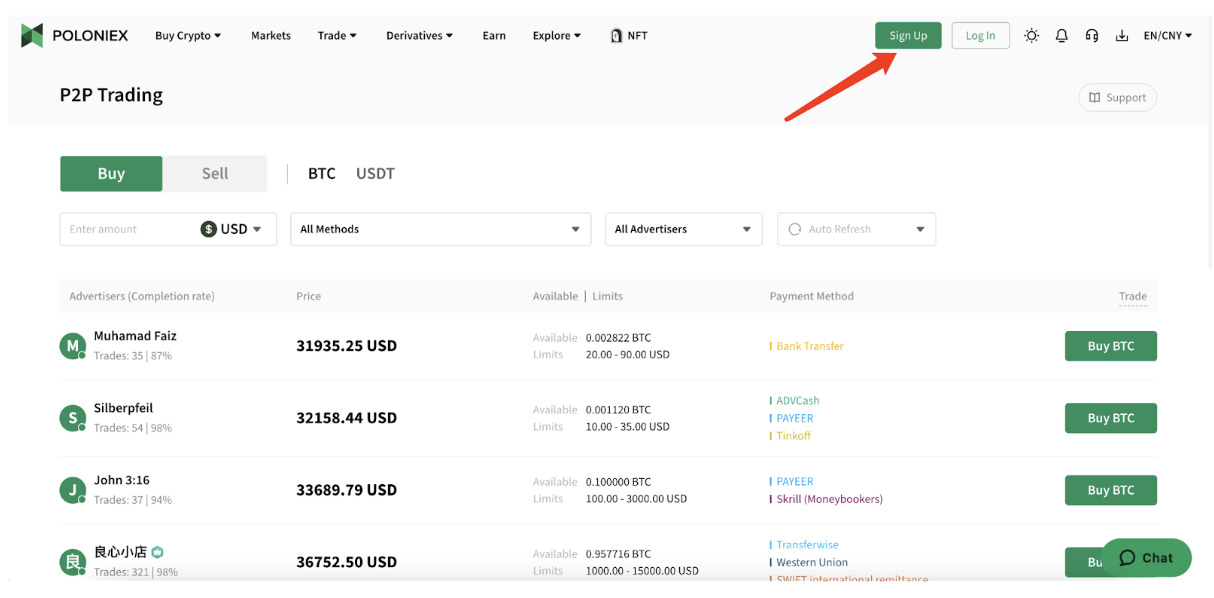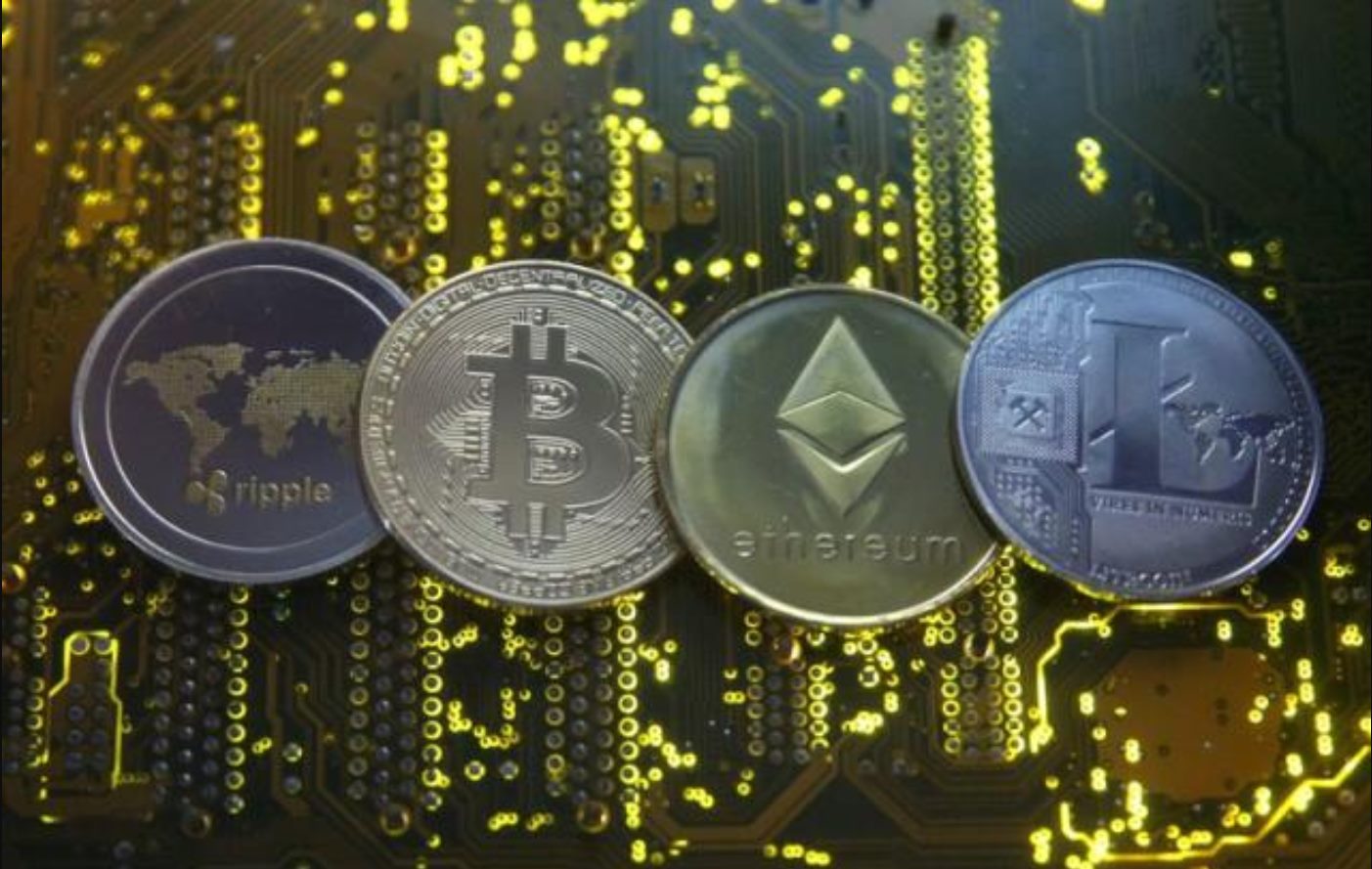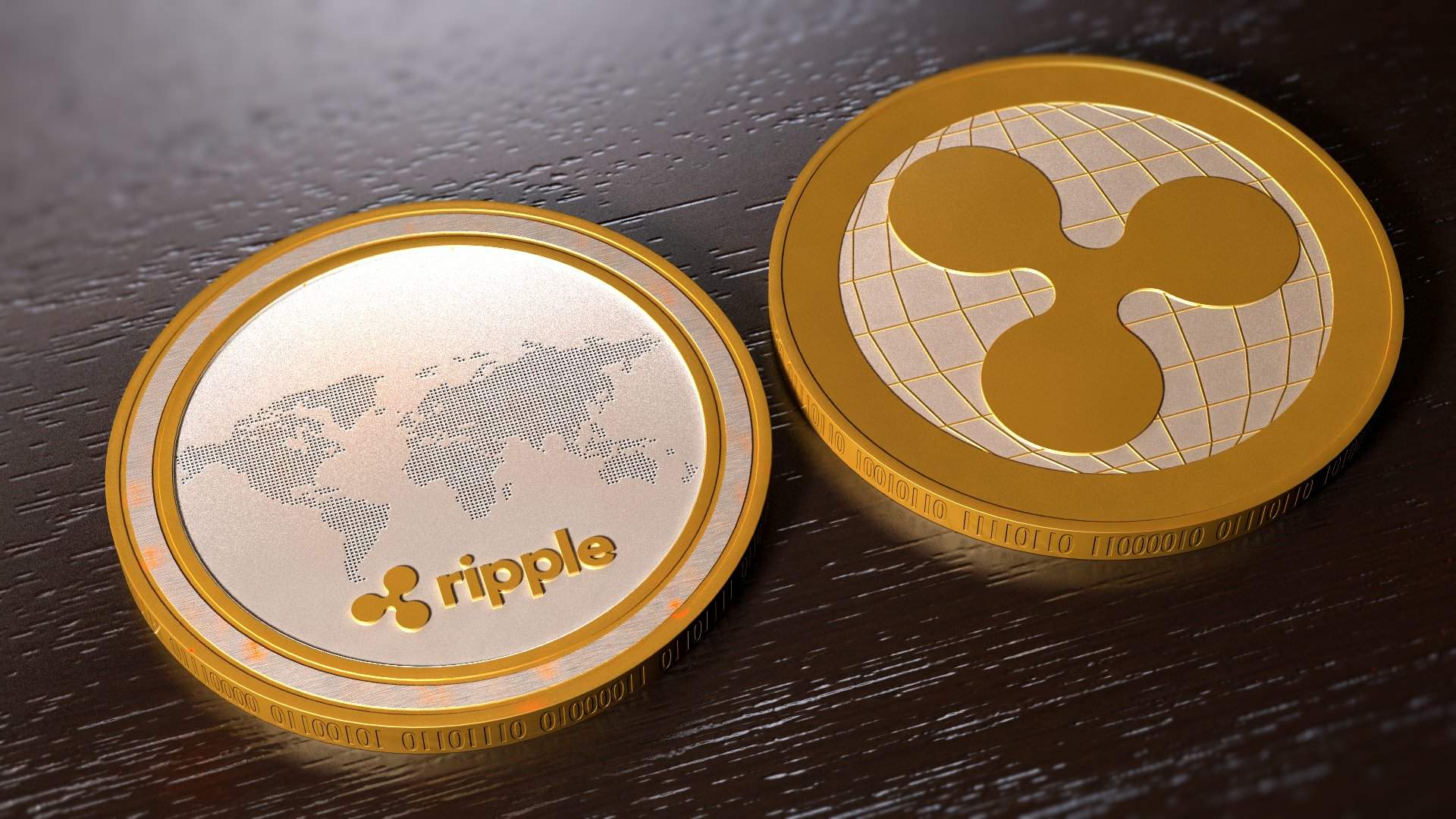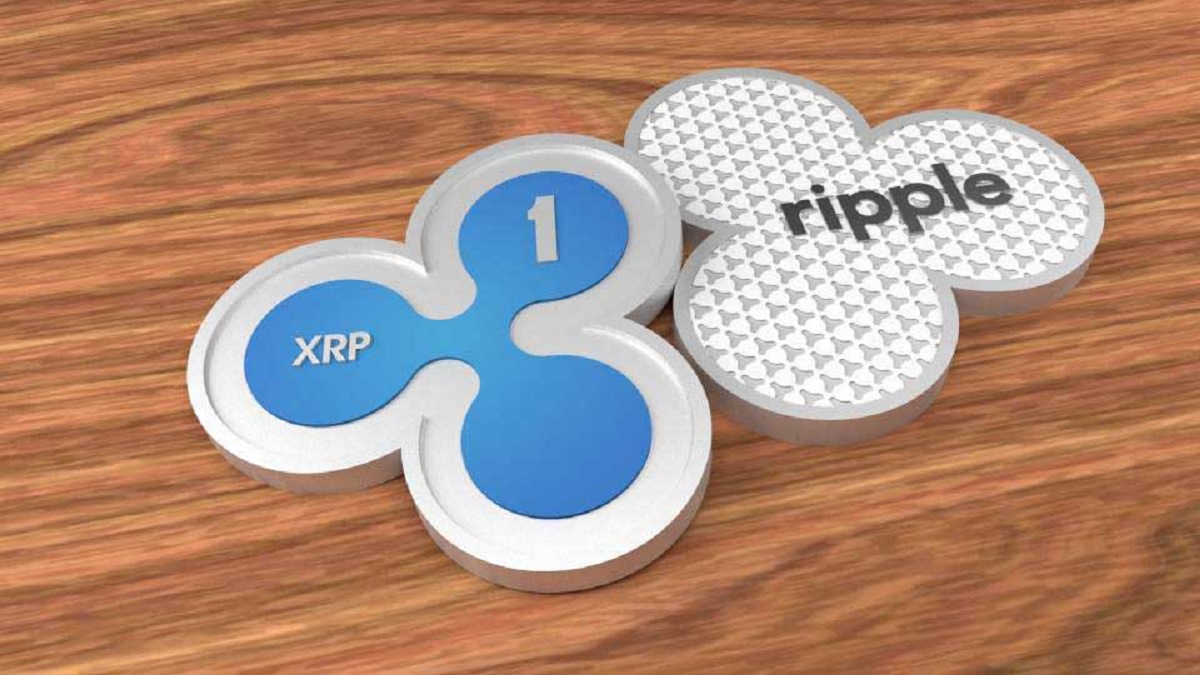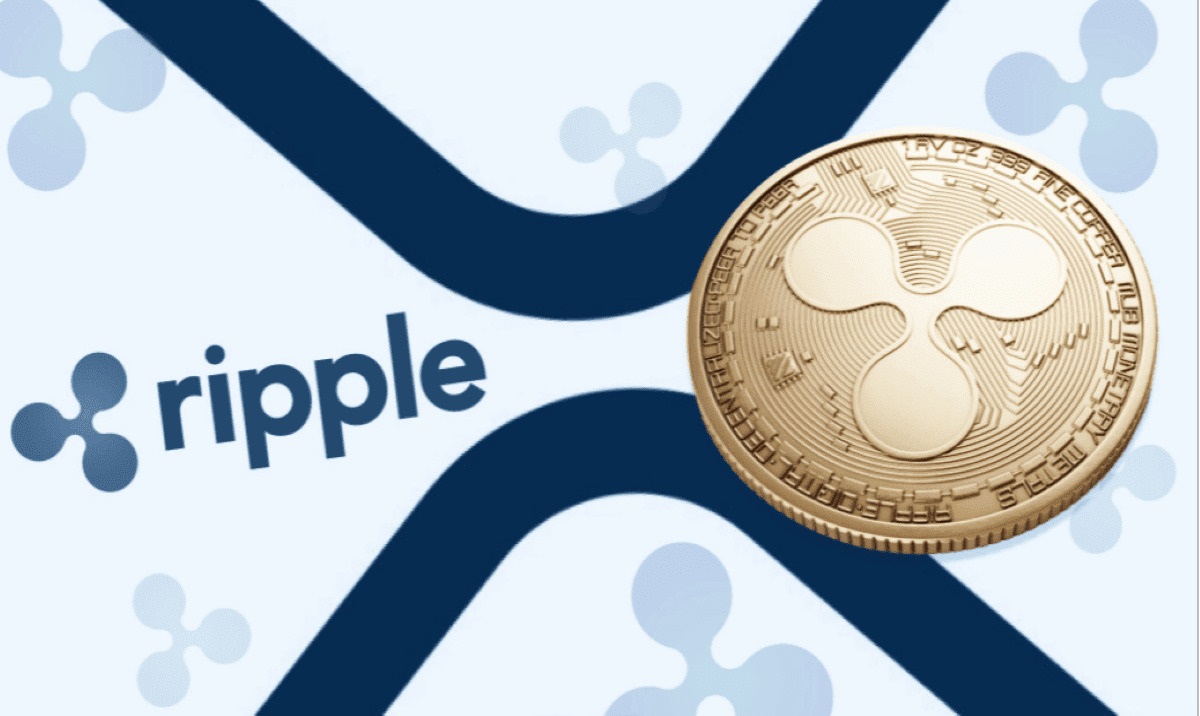Introduction
Welcome to the world of cryptocurrency! If you are interested in diversifying your investment portfolio or simply exploring the exciting opportunities in the digital currency market, then you may be wondering how to buy Ripple. In this article, we will guide you through the process of purchasing Ripple, one of the most popular cryptocurrencies in the market today.
But first, let’s take a moment to understand what Ripple is and why it has gained so much attention in the cryptocurrency community.
Ripple, also known as XRP, is a digital currency that utilizes blockchain technology to enable fast and secure global transactions. Unlike other cryptocurrencies such as Bitcoin, Ripple was designed specifically for transferring money across different financial institutions and networks. Its primary goal is to bridge the gap between traditional banking systems and digital currencies, making cross-border transactions more efficient and cost-effective.
Now you might be wondering why you should consider buying Ripple. Well, there are several reasons why Ripple has generated significant interest among investors:
- Partnerships: Ripple has formed partnerships with numerous financial institutions and banks around the world. These partnerships provide Ripple with a strong foundation and increase its credibility, making it a promising investment opportunity.
- Liquidity: Ripple is currently one of the most liquid cryptocurrencies available for trading. Its high trading volume ensures that buying and selling Ripple is relatively easy compared to some other cryptocurrencies.
- Price Potential: Ripple’s price has shown significant growth and potential for further appreciation. While past performance is not indicative of future results, many investors believe that Ripple’s technology and partnerships position it for long-term success.
Before diving into the process of buying Ripple, it is essential to educate yourself about cryptocurrencies in general and Ripple specifically. Research different aspects such as market trends, potential risks, and the technology behind Ripple. This knowledge will empower you to make informed decisions and minimize any potential pitfalls.
In the next sections, we will guide you through the process of buying Ripple, including setting up a wallet, choosing a cryptocurrency exchange, verifying your identity, funding your account, and finally purchasing Ripple. So, let’s get started!
What is Ripple?
Ripple, also known as XRP, is a digital currency and blockchain-based technology that enables fast and secure global transactions. It was created in 2012 by Ripple Labs Inc. to address the inefficiencies and high costs associated with traditional banking systems and cross-border transactions.
Unlike other cryptocurrencies like Bitcoin, Ripple is not just a digital currency; it is a decentralized platform that facilitates the transfer of money between different financial institutions and networks. Ripple’s primary mission is to provide a seamless and cost-effective solution for transferring money across borders.
One of the key features that sets Ripple apart from other cryptocurrencies is its consensus ledger, known as the XRP Ledger. This ledger allows for real-time and near-instantaneous settlement of transactions, eliminating the need for intermediaries like banks and reducing the costs and delays typically associated with cross-border transfers.
The XRP Ledger operates using a unique consensus algorithm called the Ripple Protocol Consensus Algorithm (RPCA). This algorithm ensures that transactions are verified and confirmed by a group of trusted validators, making the network secure and reliable.
Another important aspect of Ripple is its focus on partnerships with financial institutions. Ripple has established relationships with numerous banks, remittance services, and payment providers worldwide. These partnerships allow for the integration of Ripple’s technology into existing banking systems, making it easier for institutions to adopt and utilize XRP for their cross-border transactions.
One of the key benefits of using Ripple is its ability to settle transactions in any currency, including traditional fiat currencies like the US Dollar, Euro, or Japanese Yen, as well as other cryptocurrencies. This flexibility makes Ripple a versatile platform that can facilitate transactions between different types of currencies, providing a seamless experience for users.
Overall, Ripple offers a unique and innovative solution to the challenges associated with global money transfers. Its combination of fast transaction speed, low fees, and partnerships with financial institutions has made it a popular choice for individuals and businesses looking for efficient and cost-effective cross-border payment solutions.
In the next sections, we will explore how to buy Ripple and become part of this rapidly evolving cryptocurrency ecosystem.
Why Buy Ripple?
There are several compelling reasons why you might consider buying Ripple (XRP) as part of your cryptocurrency investment strategy. Let’s explore some of the key factors that make Ripple an attractive investment:
- Partnerships and Adoption: Ripple has successfully forged partnerships with many established financial institutions and banks around the world. This level of adoption and collaboration indicates that Ripple’s technology is being recognized and embraced by the traditional financial sector. The integration of Ripple’s technology into existing banking systems can potentially lead to widespread usage of XRP as a medium of exchange, driving up its value.
- Efficient and Fast Transactions: Ripple’s blockchain technology enables fast and efficient transactions, making it an ideal choice for cross-border payments. Compared to traditional banking systems, which can take several days to process international transfers, Ripple’s network settles transfers within seconds. This speed and efficiency not only save time but also reduce transaction costs.
- Liquidity and Market Cap: Ripple is one of the largest cryptocurrencies in terms of market capitalization. Its high liquidity ensures that there is sufficient trading volume, making it easier to buy and sell Ripple without significant price slippage. Additionally, the large market cap provides stability and increases investor confidence in the long-term potential of XRP.
- Institutional Interest: Ripple’s partnerships and collaborations have attracted the attention of institutional investors. The involvement of major financial institutions adds credibility and can drive up demand for XRP as institutional investors seek exposure to the cryptocurrency market.
- Price Potential: While past performance is not indicative of future results, Ripple has shown significant price potential in the past. Its value has experienced substantial growth in a relatively short period. As Ripple continues to innovate and expand its network, there is the potential for further price appreciation.
It is important to note that investing in cryptocurrencies, including Ripple, comes with risks. The cryptocurrency market is highly volatile, and prices can fluctuate dramatically. It is crucial to conduct thorough research, stay informed about market trends, and carefully consider your investment goals and risk tolerance before buying Ripple or any other digital asset.
In the next sections, we will guide you through the process of buying Ripple, starting with the necessary research and education to help you make informed decisions about your investment.
Research and Education
Before diving into the process of buying Ripple (XRP), it is crucial to educate yourself about cryptocurrencies and specifically understand the factors that can impact Ripple’s value and potential future growth. Here are some key steps to consider:
Study the Cryptocurrency Market: Familiarize yourself with the overall cryptocurrency market trends, including the dynamics of different cryptocurrencies and their historical performance. Pay attention to factors such as market volatility, regulatory developments, and technological advancements that can influence the price of digital assets like Ripple.
Understand Ripple’s Technology: Acquaint yourself with Ripple’s blockchain technology and its unique features. Explore how Ripple’s blockchain differs from other digital currencies like Bitcoin and Ethereum. Understanding the fundamental aspects of Ripple’s technology can provide insights into its potential long-term viability and adoption.
Follow Ripple’s Partnerships and Collaborations: Keep an eye on Ripple’s partnerships with financial institutions, banks, and payment providers. These collaborations can have a significant impact on Ripple’s value and adoption in the financial industry. Stay updated on the progress and success of these partnerships to gauge the potential growth of Ripple in the market.
Monitor Market Sentiment and News: Stay informed about the latest news, opinions, and market sentiment surrounding Ripple. Monitor reputable cryptocurrency news platforms, forums, and social media channels to gather insights from experts and the community. However, exercise caution and critically analyze information to make well-informed decisions.
Evaluate Risk and Potential Rewards: Assess the risks and potential rewards associated with investing in Ripple. As with any investment, it is essential to consider the volatility and inherent risks of the cryptocurrency market. Be realistic about your investment goals and evaluate whether Ripple aligns with your risk tolerance and long-term objectives.
Consider Professional Advice: If you are new to cryptocurrency investing or feel overwhelmed by the complexity of the market, consider seeking professional advice from financial advisors or cryptocurrency experts. They can provide guidance tailored to your financial circumstances and help you make informed decisions about buying Ripple.
By conducting thorough research and staying educated about the cryptocurrency market, you can make more informed decisions about buying Ripple. Remember that knowledge is power when it comes to investing in cryptocurrencies.
In the next sections, we will guide you through the process of buying Ripple, starting with setting up a wallet to secure your XRP holdings.
Choosing a Wallet
Before you can buy Ripple (XRP), you need to have a secure wallet to store your digital assets. A wallet serves as a digital vault that allows you to safely store, send, and receive your cryptocurrencies. Here are some important factors to consider when choosing a wallet:
Security: The most critical aspect of a wallet is its security. Look for wallets that offer robust security features, such as two-factor authentication (2FA), encryption, and the ability to control your private keys. A wallet with strong security measures can protect your XRP holdings from potential cyber threats.
Type of Wallet: There are several types of wallets available, including hardware wallets, software wallets, and online wallets. Hardware wallets, such as Ledger and Trezor, offer the highest level of security and are recommended for storing large amounts of Ripple. Software wallets, such as Exodus and Atomic Wallet, are installed on your computer or mobile device and provide flexibility and ease of use. Online wallets, also known as web wallets, are accessible through a web browser and are convenient for quick transactions, but they come with a higher risk of potential hacking.
Compatibility: Ensure that the wallet you choose is compatible with Ripple (XRP). Not all wallets support all cryptocurrencies, so check the supported coins list before making a decision. Additionally, consider the compatibility of the wallet with your devices and operating systems to ensure a seamless user experience.
User-Friendliness: Look for wallets that are user-friendly and provide a straightforward interface. A wallet with an intuitive design and easy navigation can make it more convenient for you to manage your XRP holdings and conduct transactions.
Community and Reputation: Research the wallet’s community and reputation. Look for wallets that have a strong community following and positive reviews from users. You can find valuable insights and feedback from the community to gauge the reliability and trustworthiness of a particular wallet.
Backup and Recovery: Consider a wallet that provides backup and recovery options. Accidental loss or theft of your device should not result in the loss of your XRP. Look for wallets that allow you to create backups and easily restore your wallet using a recovery phrase or passphrase.
Remember, choosing the right wallet is crucial for the security and accessibility of your Ripple holdings. Take your time to research and assess different wallet options based on the factors mentioned above. Once you have selected a wallet, you’ll be ready to move on to the next step of buying Ripple.
In the next sections, we will guide you through the process of selecting a cryptocurrency exchange and setting up an account to start your journey of buying Ripple.
Choosing a Cryptocurrency Exchange
Choosing the right cryptocurrency exchange is an important step in buying Ripple (XRP). An exchange is a platform that allows you to buy, sell, and trade cryptocurrencies. Here are some key factors to consider when selecting a cryptocurrency exchange:
Security: Security should be your top priority when choosing an exchange. Look for exchanges with robust security measures, such as two-factor authentication (2FA), secure socket layer (SSL) encryption, and cold storage of funds. Check if the exchange has a track record of handling security breaches and how it manages customer funds.
Liquidity: Liquidity refers to the ability to buy or sell an asset quickly and at a reasonable price. Choose an exchange with high liquidity to ensure that you can easily execute your Ripple trades. High liquidity also reduces the risk of significant price fluctuations and slippage.
Supported Countries: Not all exchanges are available in every country. Verify if the exchange you’re considering operates in your region. Some exchanges have restrictions or additional requirements for certain countries, so it’s essential to check the supported countries list before proceeding.
Available Trading Pairs: Check which trading pairs are available on the exchange. In the case of Ripple, you want to ensure that the exchange offers XRP trading pairs with fiat currencies like USD, EUR, or other major cryptocurrencies such as BTC or ETH. Having multiple trading options allows for more flexibility in your trading strategy.
Transaction Fees: Different exchanges have varying fee structures. Look for exchanges with competitive fees that align with your trading volume and frequency. Some exchanges offer discounted fees for high-volume traders, so consider your trading habits when evaluating fee structures.
User Experience: A user-friendly interface and intuitive trading platform can make a significant difference in your trading experience. Look for exchanges that provide a seamless and easy-to-navigate platform, as well as advanced trading features and charting tools, if you’re an experienced trader.
Reputation and Regulation: Research the reputation and regulatory compliance of the exchange. Look for exchanges with a good track record and positive user reviews. Additionally, check if the exchange complies with relevant regulations in your country to ensure a safer and more transparent trading environment.
Customer Support: Consider the level of customer support provided by the exchange. Look for exchanges with responsive customer support that can address any concerns or issues you may encounter efficiently. Prompt and reliable customer support can make a significant difference in resolving any potential problems during your trading journey.
Take your time to evaluate different exchanges based on these factors before making a decision. It’s also worth considering using multiple exchanges for diversification and accessing different trading options. Once you have chosen an exchange, the next step is to set up an account and complete the necessary verification process.
In the next sections, we will guide you through the account setup process and help you understand the verification requirements for buying Ripple.
Setting up an Account
Once you have chosen a cryptocurrency exchange to buy Ripple (XRP), the next step is to set up an account. Here’s a step-by-step guide on how to set up an account on most cryptocurrency exchanges:
Step 1: Visit the Exchange’s Website: Go to the official website of the chosen cryptocurrency exchange. Ensure that you are visiting the correct and secure website by verifying the URL and checking for a secure connection (look for ‘https’ in the URL).
Step 2: Sign Up: Look for the “Sign Up,” “Register,” or “Create Account” button on the exchange’s website. Click on it to begin the account creation process.
Step 3: Provide Your Personal Information: Fill out the required information accurately. This typically includes your full name, email address, and a secure password. Create a password that is unique and includes a combination of uppercase and lowercase letters, numbers, and special characters for enhanced security.
Step 4: Verify Your Email: After submitting your registration details, check your email inbox for a verification email from the exchange. Click on the verification link provided in the email to verify your email address. Some exchanges may require additional steps for account verification.
Step 5: Set Up Two-Factor Authentication (2FA): Two-factor authentication adds an extra layer of security to your account. Enable 2FA by following the instructions provided by the exchange. This usually involves setting up an authenticator app on your mobile device or receiving verification codes via SMS.
Step 6: Complete Identity Verification: Many cryptocurrency exchanges require identity verification to comply with Know Your Customer (KYC) and Anti-Money Laundering (AML) regulations. Upload the necessary identification documents, such as a government-issued ID, passport, or driver’s license, as prompted by the exchange. Make sure to follow the specific requirements and guidelines provided by the exchange for a successful verification process.
Step 7: Enable Additional Security Measures: Take advantage of any additional security features offered by the exchange, such as withdrawal whitelist, IP whitelisting, or notification alerts for account activity. These measures can further enhance the security of your account and protect your Ripple holdings.
Step 8: Familiarize Yourself with the Exchange’s Platform: Take some time to explore the exchange’s trading platform. Get acquainted with the various features, trading pairs, and order types offered by the exchange. Understanding the platform will make it easier for you to navigate and execute trades efficiently.
It’s important to note that the account setup process may vary across different exchanges. Some exchanges may have additional steps or requirements. Be patient and carefully follow the instructions provided by the exchange during the account creation process.
Once your account is set up and verified, you’ll be ready to fund your account and start buying Ripple (XRP). In the next sections, we will guide you through the process of funding your exchange account and purchasing Ripple.
Verifying Your Identity
Verifying your identity is a crucial step in the process of buying Ripple (XRP) on most cryptocurrency exchanges. The verification process is primarily designed to comply with Know Your Customer (KYC) and Anti-Money Laundering (AML) regulations, ensuring a safe and secure trading environment. Here’s an overview of what to expect during the identity verification process:
Step 1: Account Registration: When you sign up for an account on a cryptocurrency exchange, you will typically need to provide basic personal information, such as your name, email address, and a secure password. This initial registration helps create your account and initiate the verification process.
Step 2: Document Submission: Most exchanges require you to submit identification documents to verify your identity. These documents typically include a government-issued ID, passport, or driver’s license. Carefully follow the specific instructions provided by the exchange on the types of acceptable documents, file formats, and size limitations.
Step 3: Proof of Address: In addition to identity verification, some exchanges may require proof of address to verify your residential information. This can be done by submitting recent utility bills, bank statements, or other documents that clearly display your name and address. Again, carefully follow the exchange’s guidelines and requirements for proof of address documentation.
Step 4: Selfie or Photo Validation: To ensure that the identification documents you submitted are indeed yours, some exchanges may require you to take a selfie or provide a photo of yourself holding your identification document. This step helps prevent identity theft and fraudulent activities on the platform.
Step 5: Verification Process Timeframe: The time it takes for your identity verification to be processed can vary depending on the exchange’s workload and verification procedures. In some cases, verification can be completed within a few minutes, while in others, it may take several days. Be patient and check the exchange’s guidelines or contact customer support if you have any concerns or questions regarding the verification process.
Step 6: Compliance and Privacy: The verification process is designed to ensure compliance with KYC and AML regulations, as well as to protect the privacy and security of the exchange’s users. The information you provide during the verification process is typically encrypted and stored securely, strictly following data protection protocols.
It’s important to note that the verification process may vary slightly across different exchanges. Some exchanges may require additional steps or documentation, while others may have different thresholds or requirements depending on the level of verification needed.
By completing the identity verification process, you are not only complying with regulatory requirements but also gaining access to the full features and benefits of the exchange. Once your identity is verified, you’ll be ready to fund your account and start buying Ripple.
In the next sections, we will guide you through the process of funding your exchange account and purchasing Ripple (XRP).
Funding Your Account
Once your account is set up and verified on a cryptocurrency exchange, the next step in buying Ripple (XRP) is to fund your account. Funding your account involves depositing funds into your exchange wallet to use for purchasing Ripple. Here’s a step-by-step guide on how to fund your exchange account:
Step 1: Login to Your Account: Visit the cryptocurrency exchange’s website and log in to your account using your credentials.
Step 2: Locate the Deposit Section: Navigate to the deposit or funding section of the exchange’s platform. This section is usually accessible from the dashboard or account settings menu.
Step 3: Choose the Funding Option: Select the type of funding option you prefer, such as bank transfer, credit/debit card, or cryptocurrency transfer. Each exchange offers different funding methods, so choose the one that suits your needs and availability.
Step 4: Follow the Instructions: Follow the specific instructions provided by the exchange to complete the funding process. This may include providing banking details, setting up a wire transfer, or generating a unique deposit address for the chosen cryptocurrency.
Step 5: Double-Check Deposit Details: Before initiating the deposit, double-check the provided details, such as the account name, reference number, or the wallet address. Accuracy is crucial to ensure the successful and timely deposit of funds into your account.
Step 6: Initiate the Deposit: Initiate the deposit by following the instructions provided. This could involve transferring funds from your bank account to the exchange’s account, making a credit card payment, or sending the selected cryptocurrency to the provided wallet address.
Step 7: Wait for Confirmation: Depending on the funding method and the specific exchange, it may take some time for the deposit to be processed and confirmed. The time frame can vary, ranging from a few minutes to several hours or even longer, depending on the network speed and congestion.
Step 8: Confirm Deposit: Once the deposit is confirmed, you will typically receive a notification from the exchange. Verify that the deposited funds are reflected in your account balance before proceeding to the next step.
It’s important to note that each exchange may have its own deposit limits, fees, and processing times. Familiarize yourself with the specific terms and conditions of your chosen exchange to ensure a smooth funding process.
After successfully funding your account, you’ll be ready to purchase Ripple (XRP). In the next section, we will guide you through the process of buying Ripple on the chosen cryptocurrency exchange.
Buying Ripple
With your account funded on the cryptocurrency exchange, you are now ready to buy Ripple (XRP). Here’s a step-by-step guide on how to buy Ripple:
Step 1: Navigate to the Trading Section: On the exchange’s platform, locate the trading section. This is usually found on the main dashboard or in the navigation menu.
Step 2: Select the XRP Trading Pair: Within the trading section, find the XRP trading pair. This will typically be listed as XRP/USD, XRP/BTC, or XRP/ETH, depending on the available trading pairs on the exchange.
Step 3: Choose the Order Type: Select the type of order you wish to place. The commonly used order types include market orders, limit orders, and stop orders. A market order will execute the trade at the current market price, while a limit order allows you to set a specific price at which you are willing to buy XRP.
Step 4: Specify the Amount: Enter the desired amount of XRP you want to buy. This can be specified in either XRP units or the equivalent value in your chosen trading pair (e.g., USD, BTC, or ETH).
Step 5: Review the Order Details: Double-check the order details, including the amount of XRP, the total cost, and any associated fees. Ensure that everything is accurate before proceeding to the next step.
Step 6: Place Your Order: Once you are satisfied with the order details, click on the “Buy” button or the equivalent option provided by the exchange. Depending on the order type and market conditions, the trade will be executed instantly or when a matching buy order is found.
Step 7: Monitor Your Order: After placing the order, monitor its progress on the exchange’s platform. You will typically see the status of the order as “Pending” or “Open” until it is filled. During volatile market conditions, the execution time of the order may vary.
Step 8: Confirm the Purchase: Once your order is filled, you will receive a confirmation notification from the exchange. Verify that the purchased XRP has been added to your exchange wallet or account balance.
It’s important to note that cryptocurrency prices can be volatile and may change rapidly. Always exercise caution and be mindful of current market conditions when placing buy orders for Ripple. Consider setting price alerts or utilizing stop-loss orders to manage your risk.
Once you have successfully purchased Ripple, it is recommended to transfer the XRP to a secure wallet that you control, rather than leaving them on the exchange. This provides you with full control over your assets and reduces the risk of loss or theft.
Congratulations! You have completed the process of buying Ripple on the chosen cryptocurrency exchange. Hold onto your investment and monitor the market for potential price changes or other trading opportunities.
Storing Your Ripple Safely
After purchasing Ripple (XRP), it’s crucial to store your digital assets securely to protect them from potential risks, such as hacking, theft, or loss. Here are some essential tips for storing your Ripple safely:
Hardware Wallet: Consider using a hardware wallet, such as Ledger or Trezor, to store your XRP. Hardware wallets are offline devices that provide an extra layer of security by storing your private keys offline. This reduces the risk of your funds being exposed to online threats.
Software Wallet: If a hardware wallet is not an option, a software wallet can provide a secure storage solution. Choose a reputable software wallet that offers strong security features and allows you to control your private keys. Examples of software wallets suitable for storing Ripple include Exodus and Atomic Wallet.
Online Wallet Precautions: If you choose to use an online wallet provided by an exchange or a third-party service, exercise caution. Opt for wallets with a track record of security and choose platforms with two-factor authentication (2FA) and other robust security measures. Remember that online wallets are more vulnerable to hacking and require additional precautions.
Back Up Your Wallet: Regularly backup your wallet to protect against physical damage or loss of your device. Software wallets often provide an option to generate a backup phrase or recovery seed. Store this backup phrase securely offline and in multiple locations to ensure that you can restore your wallet in case of any unforeseen circumstances.
Use Secure Devices and Connections: When accessing your Ripple wallet, use secure devices, such as trusted computers or mobile devices, and ensure that your internet connection is protected. Avoid using public Wi-Fi networks or unsecured devices that might expose your sensitive wallet information.
Beware of Phishing Attempts: Be cautious of phishing attempts, where malicious actors try to trick you into revealing your wallet credentials. Always verify the legitimacy of the website or service you are using and never share your private keys or recovery seed with anyone.
Regularly Update Wallet Software: Keep your wallet software updated with the latest security enhancements and bug fixes. Developers often release updates to address potential vulnerabilities, so staying updated is vital for maintaining the security of your Ripple holdings.
Diversify Storage Methods: Consider diversifying your storage methods by using different types of wallets and spreading your XRP across multiple wallets. This way, if one wallet is compromised, you won’t lose all your funds, and you’ll have backups for recovery.
Stay Informed: Stay informed about the latest security practices and developments in the cryptocurrency industry. Visit reputable forums, follow trusted sources, and join online communities to learn from others and stay up to date with the best practices for storing Ripple securely.
Remember that storing your Ripple securely is crucial for protecting your investment. Take the necessary precautions to ensure the safety of your digital assets, and regularly review and update your security measures to adapt to evolving threats in the cryptocurrency landscape.
By following these tips, you can have peace of mind knowing that your Ripple is stored in a secure manner, reducing the risk of unauthorized access or loss.
Conclusion
Buying Ripple (XRP) can be an exciting step towards entering the world of cryptocurrencies. By following the steps outlined in this guide, you can navigate the process with confidence and make informed decisions about your Ripple investment.
We began by understanding what Ripple is and why it has gained popularity in the cryptocurrency market. Ripple’s focus on fast and cost-effective global transactions, coupled with its extensive partnerships and growing adoption, has positioned it as a promising investment opportunity.
We then emphasized the importance of conducting research and educating yourself about Ripple and the cryptocurrency market in general. By staying informed, you can better assess the potential risks and rewards of investing in Ripple and make informed decisions along the way.
Choosing the right wallet and cryptocurrency exchange is crucial for a secure and convenient trading experience. We discussed the significance of selecting a wallet that prioritizes security, user-friendliness, and compatibility with Ripple. Similarly, we explored the factors to consider when choosing a cryptocurrency exchange, including security measures, liquidity, and reputation.
With your account set up, verified, and funded, you were ready to purchase Ripple. We provided a step-by-step guide on how to buy Ripple on a cryptocurrency exchange, including selecting the trading pair, placing an order, and monitoring its progress.
Lastly, we emphasized the importance of storing your Ripple safely. Whether in a hardware or software wallet, securing your Ripple holdings protects them from potential vulnerabilities and ensures that you remain in control of your assets.
Remember, while this guide provides a comprehensive overview, the cryptocurrency market is dynamic and constantly evolving. Stay updated, continue learning, and adapt your strategies as needed to navigate the ever-changing landscape of cryptocurrencies and Ripple.
Now that you have the knowledge and tools to buy and store Ripple, take the next step and start your Ripple investment journey with confidence.







